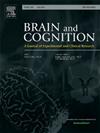Cortical brain potentials in response to lower limb proprioceptive stimuli in young adults with probable developmental coordination disorder
IF 1.4
3区 心理学
Q3 NEUROSCIENCES
引用次数: 0
Abstract
Background
Proprioceptive deficits have been shown to underlie motor problems in individuals with a probable developmental coordination disorder (pDCD). Behavioral studies have employed response times to passive limb movement to evaluate proprioceptive function in individuals with pDCD. However, the underlying neural mechanisms involved in the cortical processing of proprioceptive input and its corresponding motor response are unclear. To address this issue, this study aims to investigate neuropsychological and neurophysiological performances using event-related potentials (ERP) on proprioceptive-motor tasks in young adults with pDCD.
Methods
From a total of 149 young adults screened using the Bruininks-Oseretsky Test of Motor Proficiency 2nd Edition Complete Form (BOT-2), 12 individuals with pDCD were identified (mean age ± SD: 20.50 ± 1.08 years) along with 12 age- and sex-matched controls (mean age ± SD: 20.75 ± 1.05 years). Participants placed their dominant foot on a passive ankle motion apparatus that plantarflexed the ankle at a constant velocity of 22°/s for a total of 75 trials in each proprioceptive condition. With vision occluded, participants had to press the trigger button held by the dominant hand when they sensed the passive motion of the ankle (voluntary response, VR), or purely receive the movement without a voluntary response (non-voluntary response, NVR). Behavioral performances [i.e., mean movement detection time (MDTmean), the standard deviation of the movement detection time (MDTSD)] and ERP indices (i.e., N1, P3 amplitude, and latency) related to ankle kinesthetic stimuli were obtained to determine the proprioceptive-motor function.
Results
The results showed that young adults with pDCD exhibited longer MDTmean (p < 0.001) and MDTSD (p = 0.002) compared to their controls. Electrophysiological indices measured at frontal and central electrode sites, showed that young adults with pDCD exhibited significantly smaller N1 (p = 0.019) and P3 amplitudes (p = 0.032) during VR and NVR conditions. Notably, correlation analysis revealed a significant negative relationship between MDTmean and N1 (r = 0.62, p < 0.001) and P3 amplitudes (r = − 0.55, p = 0.005) in the VR condition in young adults with and without pDCD.
Conclusions
This study sheds light on the central brain mechanisms underlying proprioceptive-motor deficits in young adults with pDCD. The combined analysis of behavioral and ERP data suggests that longer MDTmean and larger MDTSD in young adults with pDCD are associated with weaker proprioceptive afferent inflow shown by decreased N1 amplitude to the frontal and parietal cortices. Such degraded proprioceptive signals are followed by reduced P3 amplitude, suggesting that young adults with pDCD allocate fewer neural resources to modulate motor processes with regard to proprioceptive stimuli. These findings contribute to a better understanding of the neurophysiological basis of proprioceptive-motor deficits in pDCD and may inform the development of targeted sensorimotor interventions.
可能患有发育协调障碍的青少年对下肢本体感觉刺激的皮层脑电位反应。
背景:研究表明,本体感觉障碍是可能患有发育协调障碍(pDCD)的患者出现运动问题的原因。行为研究采用被动肢体运动的反应时间来评估 pDCD 患者的本体感觉功能。然而,大脑皮层处理本体感觉输入及其相应运动反应的潜在神经机制尚不清楚。为解决这一问题,本研究旨在利用事件相关电位(ERP)对本体感觉运动任务中的神经心理学和神经生理学表现进行调查:从使用布鲁斯-奥塞瑞斯基运动能力测验第二版完整表格(BOT-2)筛选出的 149 名年轻成人中,确定了 12 名 pDCD 患者(平均年龄± SD:20.50±1.08 岁)和 12 名年龄与性别匹配的对照组患者(平均年龄± SD:20.75±1.05 岁)。参与者将其优势足放在被动踝关节运动器械上,该器械以 22°/s 的恒定速度使踝关节跖屈,在每种本体感觉条件下共进行 75 次试验。在视线被遮挡的情况下,参与者必须在感觉到踝关节被动运动(自主反应,VR)时按下主导手所持的触发按钮,或者在没有自主反应的情况下纯粹接受运动(非自主反应,NVR)。研究人员获得了与踝关节动觉刺激相关的行为表现[即平均运动检测时间(MDTmean)、运动检测时间标准差(MDTSD)]和ERP指数(即N1、P3振幅和潜伏期),以确定本体感觉运动功能:结果表明,与对照组相比,患有 pDCD 的年轻人表现出更长的 MDTmean (p SD (p = 0.002)。在前额和中央电极部位测量的电生理指标显示,患有 pDCD 的年轻人在 VR 和 NVR 条件下表现出明显较小的 N1(p = 0.019)和 P3 振幅(p = 0.032)。值得注意的是,相关分析显示 MDTmean 与 N1 之间存在明显的负相关(r = 0.62,p 结论):本研究揭示了患有本体感觉-运动障碍的年轻成人的大脑中枢机制。对行为和 ERP 数据的综合分析表明,青壮年本体感觉缺失症患者较长的 MDTmean 和较大的 MDTSD 与较弱的本体感觉传入有关,表现为传入额叶和顶叶皮层的 N1 振幅减小。这种本体感觉信号的退化随之而来的是 P3 振幅的降低,这表明患有本体感觉障碍的青壮年在本体感觉刺激方面分配给调节运动过程的神经资源较少。这些发现有助于更好地理解本体感觉运动障碍的神经生理学基础,并为开发有针对性的感觉运动干预措施提供信息。
本文章由计算机程序翻译,如有差异,请以英文原文为准。
求助全文
约1分钟内获得全文
求助全文
来源期刊

Brain and Cognition
医学-神经科学
CiteScore
4.60
自引率
0.00%
发文量
46
审稿时长
6 months
期刊介绍:
Brain and Cognition is a forum for the integration of the neurosciences and cognitive sciences. B&C publishes peer-reviewed research articles, theoretical papers, case histories that address important theoretical issues, and historical articles into the interaction between cognitive function and brain processes. The focus is on rigorous studies of an empirical or theoretical nature and which make an original contribution to our knowledge about the involvement of the nervous system in cognition. Coverage includes, but is not limited to memory, learning, emotion, perception, movement, music or praxis in relationship to brain structure or function. Published articles will typically address issues relating some aspect of cognitive function to its neurological substrates with clear theoretical import, formulating new hypotheses or refuting previously established hypotheses. Clinical papers are welcome if they raise issues of theoretical importance or concern and shed light on the interaction between brain function and cognitive function. We welcome review articles that clearly contribute a new perspective or integration, beyond summarizing the literature in the field; authors of review articles should make explicit where the contribution lies. We also welcome proposals for special issues on aspects of the relation between cognition and the structure and function of the nervous system. Such proposals can be made directly to the Editor-in-Chief from individuals interested in being guest editors for such collections.
 求助内容:
求助内容: 应助结果提醒方式:
应助结果提醒方式:


